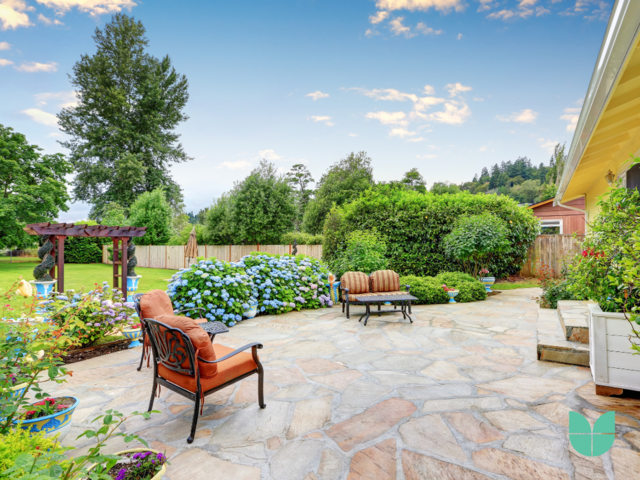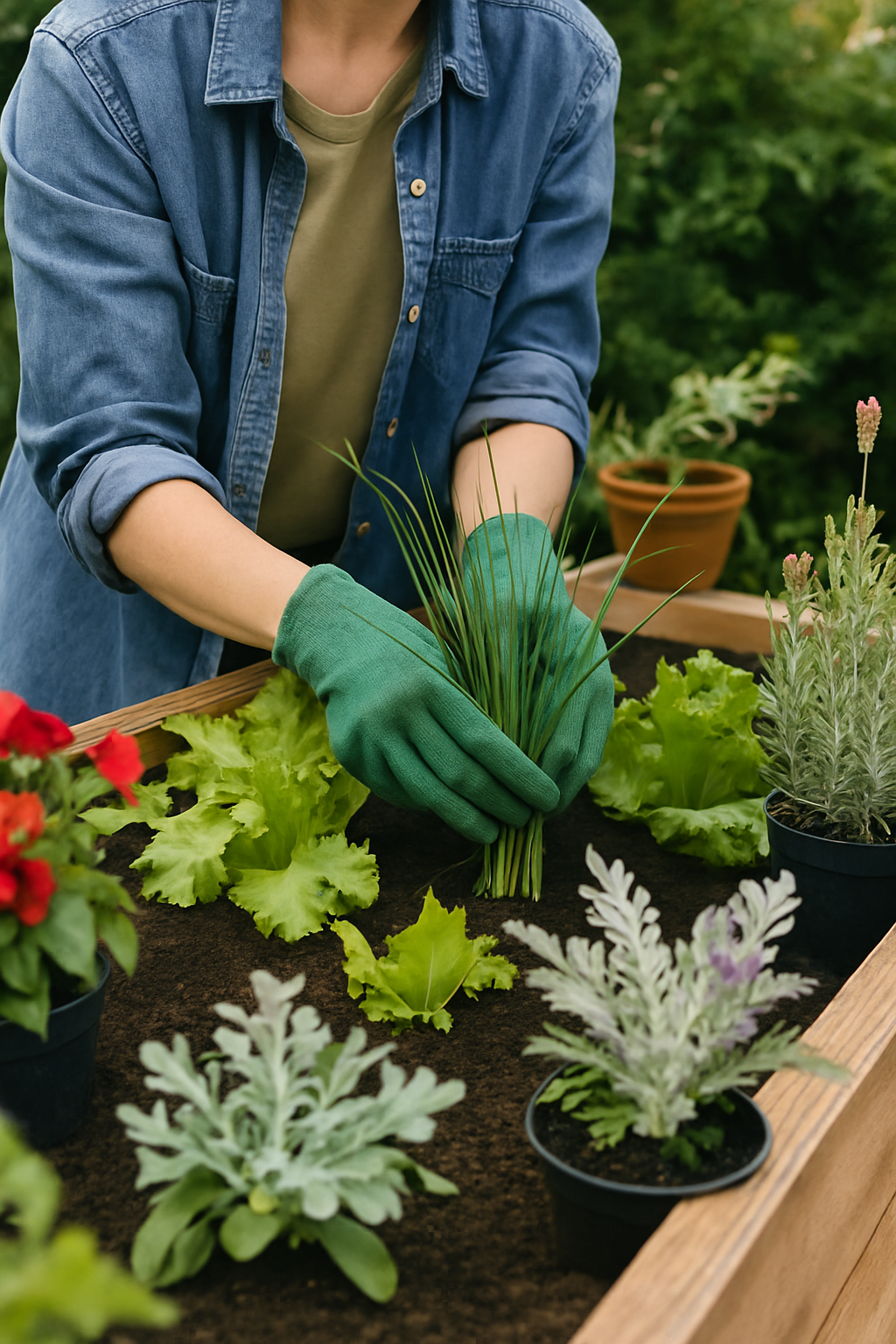Outdoor living spaces are more than just the space around your home, they can also be an additional living space offering more room to breathe and endless options for design. A functional and comfortable area is the ideal space for relaxation, entertainment, and enjoyment. In this blog post, we will explore design ideas for patios, decks, and pergolas, including detailed information, design tips, and examples to help you transform your outdoor space into an inviting oasis of comfort and style.

Understanding Outdoor Living Spaces
Outdoor living spaces can be used in numerous ways. It can be a salubrious space to relax, to socialise or to connect with nature. With the right design, the transition from indoor to outdoor can be seamless; not only increasing the size of your living space, but also increasing the overall value of your home.
Before you begin, first evaluate the amount of space that is reasonably available to you. Your design cannot be approached without defining the intended use for the space as well as the local climate, and personal preferences of the user. Understanding these aspects will help you make design decisions that will create a functional and enjoyable outdoor living environment.

Designing a Patio:
Choosing the Right Patio Materials
When choosing your patio materials, important factors to consider are budget, style and the environment. When making your choice, consider elements such as durability, slip resistance, and maintenance requirements. Slippery surfaces are a hazard in wetter climates or where children or elderly people will frequent. Natural stone, pavers, concrete, and composite materials are popular choices but choose the right materials for your specific needs.
Designing a Layout and Flow
In an outdoor space that will be used by people, it’s always important to put their needs and movements first. Plan the layout of your patio to maximise space and create an intuitive flow. Determine seating places, dining areas, or any other features you want to include. Make sure there is enough space to move around comfortably and that the layout compliments the overall look of the space. If the space is large enough, zoning areas for different uses can be a great way to cater for more than one person's needs. Kids areas can be in one section while dining or social spaces can be zoned elsewhere.
Including Outdoor Furniture and Accessories
When choosing outdoor furniture, style is not the only factor. Select outdoor furniture that is comfortable, long-lasting, and weather-resistant. Think about the typical number of users and how the space will be used. Lounge chairs, sofas, and dining sets can be versatile and chic and for an additional injection of style and comfort, add decorations such as outdoor rugs, pillows, and lights.

Designing a Deck:
Selecting Deck Materials
Consider the advantages and disadvantages of various deck materials, such as natural wood, composite decking, or PVC. To pick the ideal solution for your deck, do your research and understand the needs of your deck including maintenance requirements, durability, as well as aesthetics.
Determining the Deck Layout and Size
The layout is determined by the available size and by the intended use of the deck. Do not forget to include space for seating, dining, and any other features that you wish to add. People must be able to move so traffic movement, entry points, and the deck's relationship to other features in your outdoor space must be factored.
Incorporating efficient amenities and enhancements
The clever use of a deck means you can have storage and function as well as beauty. Make your deck more functional by incorporating amenities like built-in benches, plants, or storage options. A pergola or retractable awning can provide both shade and shelter from the weather meaning you can use the space much more freely.

Designing a Pergola:
Pergola Styles and Materials
Whether it's a traditional timber pergola or a sleek, modern design, choose a pergola type that matches your outdoor aesthetics. Select materials that can resist outside conditions and require little upkeep, such as cedar, vinyl, or aluminium. A pergola is a beautiful addition to a garden and the right materials will ensure it remains intact in all conditions.
Determining the Ideal Location and Size
Determine the best position for your pergola based on shade, views, and the overall layout of your outdoor space. Determine the proper size to guarantee a harmonious fit and pleasant seating or dining beneath it. It may be a focal point or perhaps it will be a hidden gem where you have a private dining space. Whatever you choose, make sure it can maintain its integrity in the chosen spot.
Adding Shade and Privacy components
Cloth curtains, retractable canopies or climbing vines can make your pergola more attractive and comfortable by introducing shade or cover. To create a more private and personal ambiance, consider adding privacy features such as lattice screens or hanging pots.

Increasing the Functionality of Outdoor Living Spaces:
Incorporating Lighting for Ambiance and Functionality
There are numerous solar powered and LED outdoor lights available on the market. Festooned lights can create an intimate atmosphere in a garden and pathways can be lit with soft features to guide the user along. Lighting will help the garden remain comfortable from day into night therefore extending its use. To emphasise focal areas, offer useful illumination, and create a warm and inviting ambiance, use a blend of task lighting, accent lighting, and ambient lighting.
Adding Fire Features for Warmth and Cosiness
To extend the usability of your outdoor space during cooler seasons, consider installing fire pits, fireplaces, or portable heaters. These features not only provide warmth but also create a welcoming atmosphere for social gatherings and relaxation.
Designing Outdoor Kitchens and Grilling Areas
Gas and charcoal BBQ’s are also an enjoyable way to dine but there are more permanent features available. If you enjoy cooking and entertaining outside, install an outdoor kitchen or grilling area. Include features like built-in grills, counters, sinks, and utensil and cooking supply storage.
Creating Versatile Spaces for Entertaining and Relaxation
Design your outdoor living space to accommodate various activities and provide versatility. Daytime may involve lounging in the sun or reading in a hammock, but the garden can also move into a night time space for larger social occasions. Incorporate flexible seating arrangements, movable furniture, and multifunctional elements to adapt to different gatherings, such as outdoor dining, lounging, or hosting events.

Incorporating Greenery and Landscaping:
Integrating Plants and Greenery for Natural Beauty
The reason we love the outdoors is not just the fresh air, it is where people can be surrounded by the natural beauty of nature. Plants, flowers, and greenery will enhance your outdoor living environment and can create a truly unique and magical space. Choose a variety of perennials, annuals, shrubs, and trees that thrive in your climate and match the overall look of your design.
Creating Privacy with Strategic Plantings
If privacy is an issue, there is no need to build walls; borders can be created with plants. Create privacy and solitude in your outdoor living space by using plants, hedges, or trellises. Choose plants with year-round foliage or use climbing plants to create living screens or natural dividers.
Adding Water Features for Tranquility
The sound of running water can create a relaxing atmosphere while also masking less serene noise from the surroundings. Fountains, ponds, or waterfalls can bring a sense of tranquillity and relaxation to your outdoor living space. Always be mindful of safety especially when children also use the garden.

Outdoor Living Space Upkeep and Care:
Cleaning and Maintenance Surfaces for patios, decks, and pergolas
The right materials should not need too much maintenance but there will always be a little care and attention required. Wash the surfaces of your patio, deck, and pergola on a regular basis to preserve their appearance and longevity. For cleaning solutions and techniques particular to the materials used, follow the manufacturer's instructions.
Outdoor Furniture and Accessories Maintenance
Many outdoor furniture and accessories will have certain guidelines for best maintenance. To maintain their quality, clean cushions regularly, store furniture during severe weather, and apply protective coatings. But it’s always best to follow the manufacturer's care instructions.
Tips for Seasonal Maintenance for Longevity
Set up seasonal maintenance practices to keep your outdoor living space in good shape. This could entail chores such as sealing wood surfaces, checking and repairing structures, and preparing plants for seasonal changes.
Designing functional and comfortable outdoor living spaces, such as patios, decks, and pergolas, requires careful planning, attention to detail, and consideration of your unique needs and preferences. By selecting appropriate materials, incorporating functional features, and creating comfortable seating and dining areas, you can transform your outdoor space into a welcoming retreat for relaxation, entertainment, and enjoyment.
Eager to start designing outstanding outdoor living spaces? Join our Garden Design Academy and unlock the secrets to creating functional and comfortable outdoor areas.

